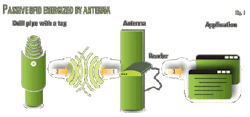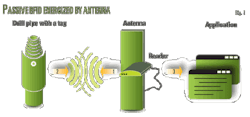The new BroadSeis system acquires low and high frequencies simultaneously using Sercel Sentinel solid streamers with a variable depth profile (patent pending).
The cable ghost notch varies along the streamer with the cable depth, and the new proprietary deghosting and imaging techniques (patents pending) use this notch diversity to produce a sharp wavelet, with a superior signal-to-noise ratio and the maximum bandwidth.
Data from Gulf of Mexico compares conventional vs. BroadSeis resolution. Images from CGGVeritas data library.
The low-noise characteristics and precise low-frequency response of Sentinel streamers have proved central to the success of BroadSeis. Sentinel is quiet and can be towed at depths to 60 m. Since Sentinel has an instrument low-cut of 2 Hz, BroadSeis promises better low frequencies, recording high-quality signal down to at least 2.5 Hz.
A feature of BroadSeis is that the cable depth profile can be tuned for different water depths and targets so that the notch diversity and output spectra are optimized for each survey. Operational experience has shown that the control of solid streamers to variable depths is robust and stable for 2D and 3D configurations, even down to 60 m, especially when using Sercel Nautilus streamer control devices. The company says that this has been proved even in areas with variable currents such as the Gulf of Mexico and variable salinity conditions such as West Africa. Sentinel has retained its low-noise characteristics at all depths, with all streamer profiles and under all conditions, the company says.
BroadSeis includes a new, true-amplitude, fully 3D deghosting algorithm that makes no 2D assumptions. This suits it for 3D and all wide-azimuth acquisition configurations, as well as 2D data. While the proprietary deghosting is a part of the BroadSeis technique, the raw field data are supplied to clients, providing them with flexibility to apply any processing techniques desired.
From shallow objectives to deep targets beneath complex overburdens, BroadSeis delivers data with exceptional bandwidths and excellent penetration, the firm notes.
Source: CGGVeritas, Tour Maine-Montparnasse 33, Avenue du Maine, B.P. 191, 75755 Paris Cedex 15, France.
More Oil & Gas Journal Current Issue Articles
More Oil & Gas Journal Archives Issue Articles
View Oil and Gas Articles on PennEnergy.com

